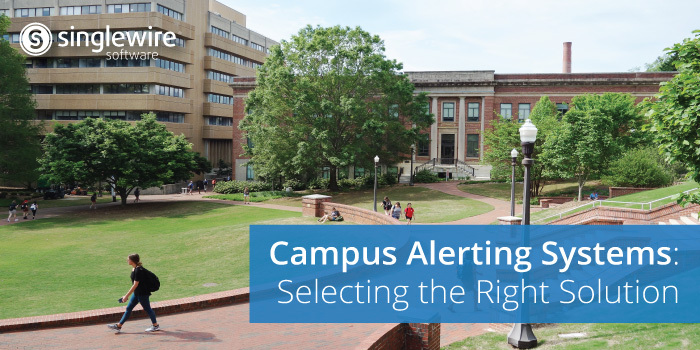Navigating Campus Alerting Systems
Selecting the right campus alerting systems is essential to ensuring the well-being of students, faculty, and staff. As educational institutions face diverse challenges, from weather-related emergencies to unforeseen security threats, a comprehensive alerting system becomes a crucial tool for timely communication and incident management. In this post, we will explore key considerations when choosing a system and why customization, integration, and incident management capabilities are essential for creating a safe learning environment.
Ensuring Comprehensive Coverage
In a dynamic campus environment, the ability to reach anyone, anywhere is non-negotiable. Your chosen campus alerting systems should seamlessly deliver alerts to both on-site and mobile devices. Whether it is a student in a lecture hall or a faculty member in the administrative building, ensuring widespread coverage is essential. A comprehensive system guarantees that officials can share critical information swiftly, enabling individuals to take appropriate actions during emergencies.
Multifaceted Communication: Text, Audio, and Visual Alerts
Intrusive alerts that capture attention on campus are vital during emergencies. Your campus alerting systems should offer a multifaceted approach, delivering alerts through text, audio, and visual channels. Whether it is a fire outbreak, a security threat, or severe weather conditions, providing information through various mediums ensures that individuals receive alerts in a format that suits their needs, enhancing overall situational awareness.
Proactive Automation for Swift Response
Proactive monitoring is key to campus safety. Robust campus alerting systems should have the capability to automate alerts based on predefined triggers. This includes integrating with weather monitoring systems, sensors, and other data sources to identify potential threats. Automation not only speeds up response times but also ensures that officials can trigger alerts without manual intervention, crucial in fast-paced and unpredictable emergencies.
Tailored Messaging for Every Scenario
Customization is the cornerstone of effective emergency communication. Your chosen campus alerting systems should provide flexible messaging options, allowing you to tailor alerts to specific scenarios. Whether it is a lockdown situation, a medical emergency, or a campus-wide announcement, the ability to customize messages ensures that the information conveyed is clear, relevant, and actionable.
Seamless Integration for Enhanced Efficiency
Integrating with your campus’s existing technology infrastructure is not just a convenience but a strategic necessity. Compatibility with current systems makes implementing campus alerting systems more cost-effective and efficient. Seamless integration ensures that the alerting system leverages the full potential of your existing resources, maximizing its impact on overall campus safety.
Beyond Campus Alerting Systems: Empowering Incident Management
Campus alerting systems should go beyond just delivering alerts; they should facilitate a coordinated response and efficient incident management. From coordinating assistance during emergencies to providing real-time updates, the system should have incident management capabilities. Post-event, the ability to view after-action reports enables institutions to learn from experiences, refine protocols, and continually enhance campus safety measures.
Selecting the right systems is a critical decision that directly impacts the safety and security of everyone within the educational institution. By addressing key considerations and prioritizing customization, integration, and incident management capabilities, you can make an informed choice that aligns with the unique needs of your campus. As you explore options, prioritize a solution that not only meets current requirements but also adapts to future challenges, ensuring a proactive and resilient approach to campus safety. For more information on how Singlewire Software serves campuses, visit our Colleges & Universities page.
